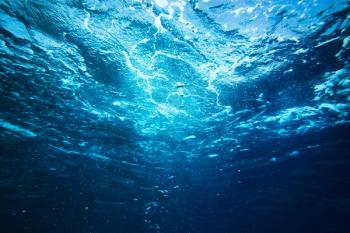
A recent study explores how smaller microplastics (MPs) are routinely found in potable water, calling into question EU Directive 2020/2184.

Using Automated Raman Microspectroscopy to Detect Microplastics in Potable Water

Detection of Microplastics in Bottled Water Using Raman Microspectroscopy

A recent study explores how smaller microplastics (MPs) are routinely found in potable water, calling into question EU Directive 2020/2184.

Last year, we released a content series titled “Advancing Agriculture for Future Generations.” Here, we compile some of the latest studies in this space.

In this edition of “Inside the Laboratory,” Elise Granek of Portland State University, in Portland, Oregon, and Susanne Brander of Oregon State University, in Corvallis, Oregon, discuss their collaborative research efforts and what their laboratories are working on.

Spectroscopy recently sat down with Elise Granek, Susanne Brander, and Summer Traylor to discuss their recent study quantifying microplastics (MPs) and anthropogenic particles (APs) in the edible tissues of black rockfish, lingcod, Chinook salmon, Pacific herring, Pacific lamprey, and pink shrimp.

A recent study out of China explored using a new continuous solid-phase extraction spectroscopy (CSPES) device to monitor water quality.

A recent study examines widespread microplastic contamination in key Oregon seafood species, emphasizing the need for coordinated local and global efforts to reduce plastic pollution and protect ecosystems, public health, and cultural traditions.

A recent review article highlighted how two-dimensional correlation spectroscopy (2D-COS) is advancing microplastics research and uncovering their aging processes and interactions with environmental substances.

A recent study highlights the potential of dissolved organic matter (DOM) as a key indicator for water quality management in Lake Baiyangdian.

A recent study examined a new method to carbon dioxide capture to reduce energy consumption.

Researchers from the University of Oviedo used diffuse reflectance spectroscopy (DRS) and machine learning (ML) to analyze post-wildfire soil organic carbon fractions, identifying key spectral regions and algorithms for advancing remote sensing applications.

A recent study examined how Raman spectroscopy, when combined with machine learning (ML), can detect and analyze fertilizer nutrients.

In 2024, we launched multiple content series, covered major conferences, presented two awards, and continued our monthly Analytically Speaking episodes. Below, you'll find a selection of the most popular content from Spectroscopy over the past year.

A new study in Infrared Physics & Technology highlights the pivotal role of Fourier transform infrared (FTIR) spectroscopy in identifying and quantifying microplastics, emphasizing its advantages, limitations, and potential for advancement in mitigating environmental pollution.

Aleksandra "Sasha" Karapetrova and Win Cowger discuss their research using µ-FTIR spectroscopy and Open Specy software to investigate microplastic deposits in remote snow areas, shedding light on the long-range transport of microplastics.

A recent study reveals widespread and increasing microplastic contamination in the soils of Phoenix and the Sonoran Desert, highlighting significant environmental concerns and the need for further research into their sources and impacts.

We examine some more of the latest articles that highlighted recent studies in environmental analysis.

A recent review article looks at how wetland ecosystems are being monitored using remote sensing technologies and imaging spectroscopy to better manage them.

A recent study examined how spectroscopic techniques, such as laser-induced breakdown spectroscopy (LIBS) and single-particle aerosol mass spectrometry (SPAMS), are monitoring indoor air quality.

Researchers have developed a novel method combining near-infrared (NIR) and mid-infrared (MIR) diffuse reflectance spectroscopy with advanced data fusion techniques to improve the accuracy of non-structural carbohydrate estimation in diverse tree tissues, advancing carbon cycle research.

Webinar Date/Time: Fri, Dec 6, 2024 11:00 AM EST

Researchers in China have developed a novel workflow for near-infrared reflectance spectroscopy (NIRS or NIR) that enhances the detection of low-level petroleum hydrocarbon pollution in soils, revealing new diagnostic features and significantly improving sensitivity for environmental monitoring.

Top articles published this week include highlights from the Eastern Analytical Symposium, a news article about the infrared (IR) spectroscopy market, and a couple of news articles recapping spectroscopic analysis of microplastics.

Researchers from Northwest University in Xi’an, China, developed a novel portable Raman spectroscopy method with advanced chemometric techniques to accurately quantify harmful polycyclic aromatic hydrocarbons (PAHs) in oily sludge.

Researchers from India developed a new micro-Raman spectroscopy system to detect and analyze microplastics.

Microplastics (MPs) and nanoplastics (NPs) are emerging contaminants requiring robust analytical techniques for identification and quantification in diverse environmental and biological matrices. This review highlights various spectroscopy methods, such as Raman, FT-IR, NIR, ICP-MS, Fluorescence, X-ray, and NMR detailing their methodologies, sample handling, and applications for characterizing MPs and NPs.